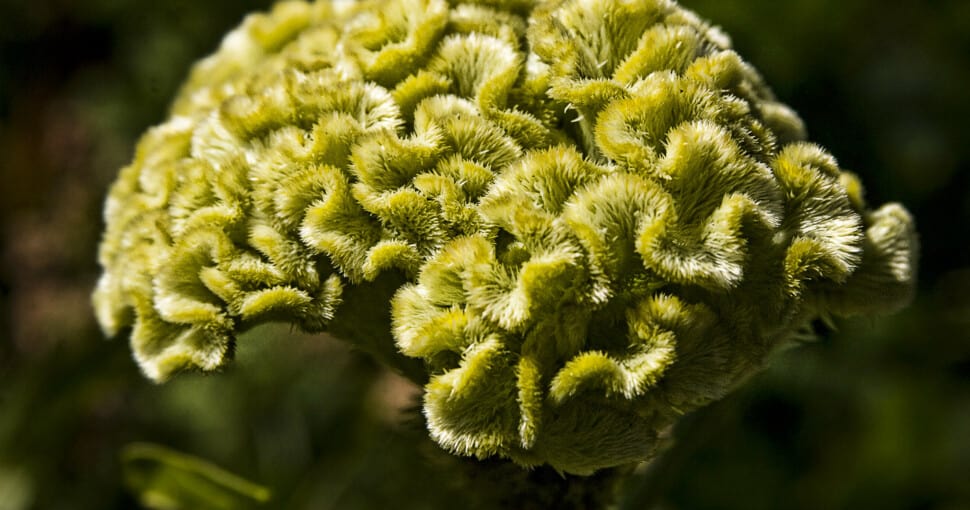Plants can be weird and wonderful, but have you ever seen plants that look like brains? Plants that look like brains are not only intriguing but bear a very close resemblance to the anatomy of the human brain. There are ten commonly found plant species that look like brains, and each of these has its own set of unique characteristics.
Contents
- 1. Mammillaria Elongata ‘Cristata’ (Brain Cactus)
- 2. Scabiosa Atropurpurea (Pincushion Flower)
- 3. Tanacetum Densum (Partridge Feather Plant)
- 4. Celosia Cristata (Brain Flower)
- 5. Helichrysum Stoechas (Mediterranean Strawflower)
- 6. Brassica Oleracea (Cauliflower)
- 7. Maclura Pomifera (Osage Orange)
- 8. Tanacetum Bipinnatum (Dune Tansy)
- 9. Rhodiola Rosea Flower (Artic Root)
- 10. Nelumbo Nucifera (Lotus)
The ten plants that look like brains include succulents, ornamental flowers, and even plants you can eat. The brain cactus is most similarly structured to the human brain and the most spooky looking, while the seed structure of the lotus is one of the most beautiful plants that resemble the brain.
Ten plants that look like brains include:
- Mammillaria Elongata ‘Cristata’ (brain cactus)
- Scabiosa atropurpurea (Pincushion Flower)
- Tanacetum Densum (Partridge Feather Plant)
- Celosia Cristata (brain flower)
- Helichrysum Stoechas (Mediterranean strawflower)
- Brassica oleracea (cauliflower)
- Maclura pomifera (osage orange)
- Tanacetum Bipinnatum (dune tansy)
- Rhodiola Rosea Flower (artic root)
- Nelumbo nucifera (lotus)
More plants looking like body parts: 6 Plants That Look Like Penises | 5 Plants That Look Like Hands | 10 Plants That Look Like Boobs | 8 Plants That Look Like Hair | 9 Plants That Look Like Vagina
1. Mammillaria Elongata ‘Cristata’ (Brain Cactus)
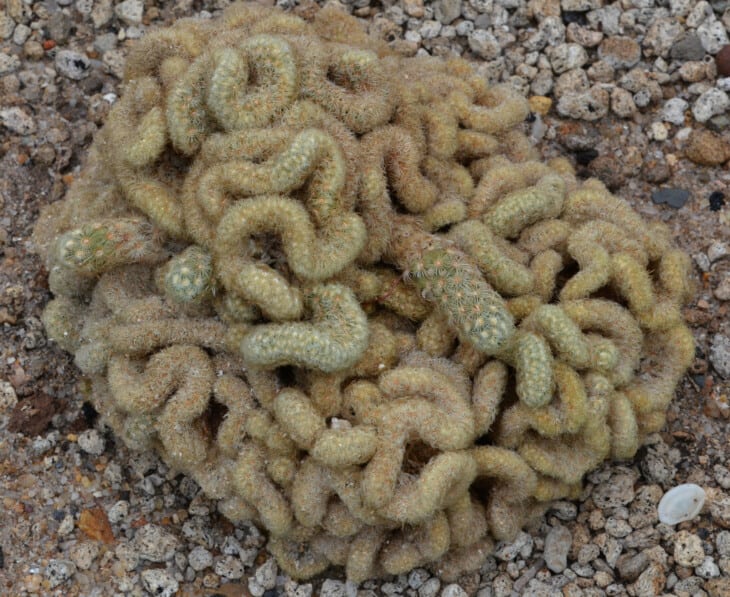
The Mammillaria Elongata Cristata is commonly known as the brain cactus and is the first plant on the list due to its eerily similarity to the human brain and, more importantly, its similarity to the folds of the brain known as the cortex. This succulent is found in central Mexico and is part of the Mammillaria Elongata family of cacti.
Most cacti in this species grow straight, but the brain cactus grows in a round, worm-like structure when damaged. The brain cactus is small, growing only 6 inches high and 12 inches wide. This cactus variety is also used for bonsai and is easy to care for as a houseplant.
2. Scabiosa Atropurpurea (Pincushion Flower)
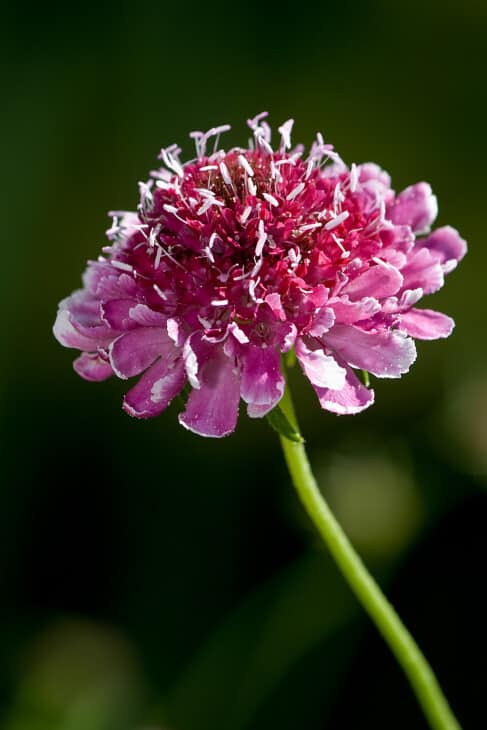
The scabiosa Atropurpurea or pincushion flower is a brain shape flower found in Europe and Asia and comes in many colors, including pink, purple, white, and blue. The pincushion flower’s center looks like the brain’s ventricles, and the petals have a similar structure to the cerebral cortex.
The pincushion flower is a stunningly elegant flower that grows two feet high and is one of the most attractive flowers to butterflies and other insects. This flower is native to Asia, Europe, and Africa and blooms throughout the summer.
3. Tanacetum Densum (Partridge Feather Plant)
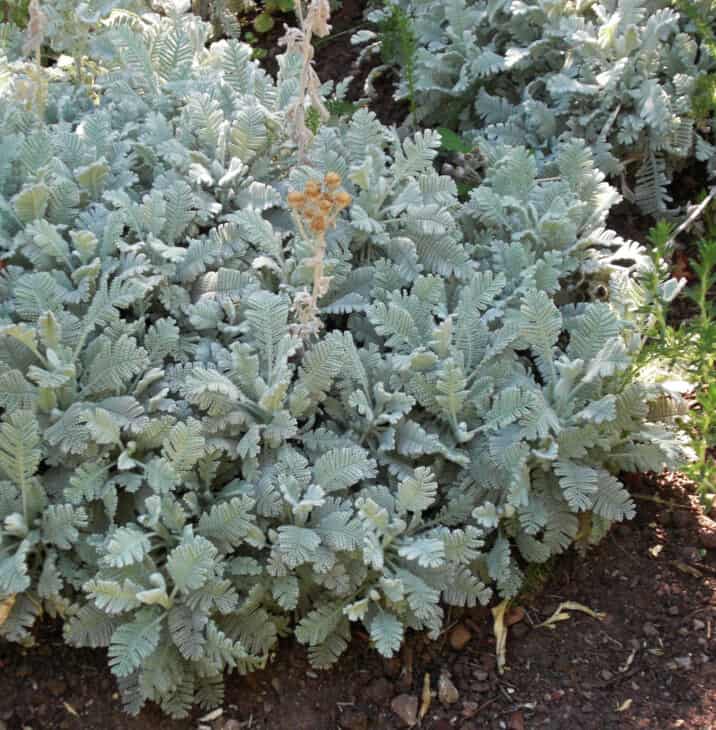
The partridge feather is a flower that is part of the aster family and native to morocco. This unique flower not only has a feather-like appearance but it’s a circular shape with many intricate buds that resemble the brain, making it number three on the list of plants that look like brains.
The partridge feather plant has distinct leaves, and these brain-like flowers come in various colors, including yellow and white. This flower is also known for its medicinal properties and can help with various ailments, including treating inflammation.
4. Celosia Cristata (Brain Flower)
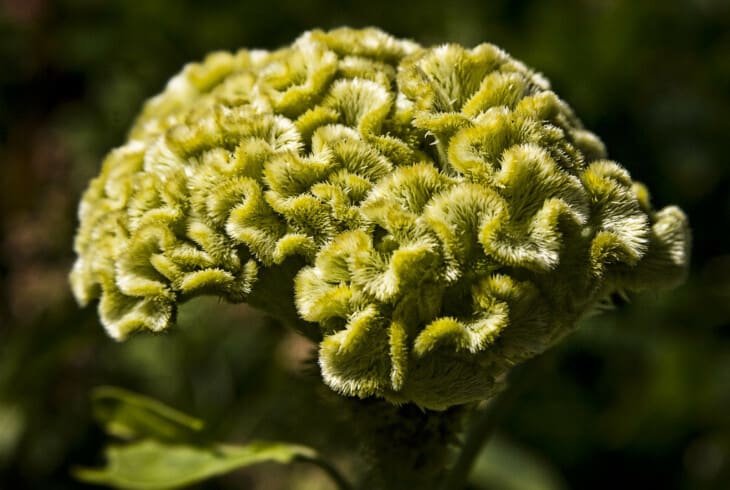
The Celosia Cristata is commonly known as the cockscomb or brain flower. This flower is referred to as the brain flower due to its intricate crest-shaped ridges resembling the brain’s outer structure.
This flower species can vary in height and typically grows just a few inches to a few feet tall. The celosia species is commonly found in the wild in china and is a striking addition to any garden. The brightly colored brain flower comes in orange, red, and yellow hues.
The brain flower is also resistant to most plant diseases and is a vigorous grower indoors and outdoors. This eye-catching flower is also used for ornamental purposes and can easily be grown from seeds. In Nigeria, the brain flower is used as a vegetable, and the yellow variety of this flower contains high levels of dopamine.
5. Helichrysum Stoechas (Mediterranean Strawflower)
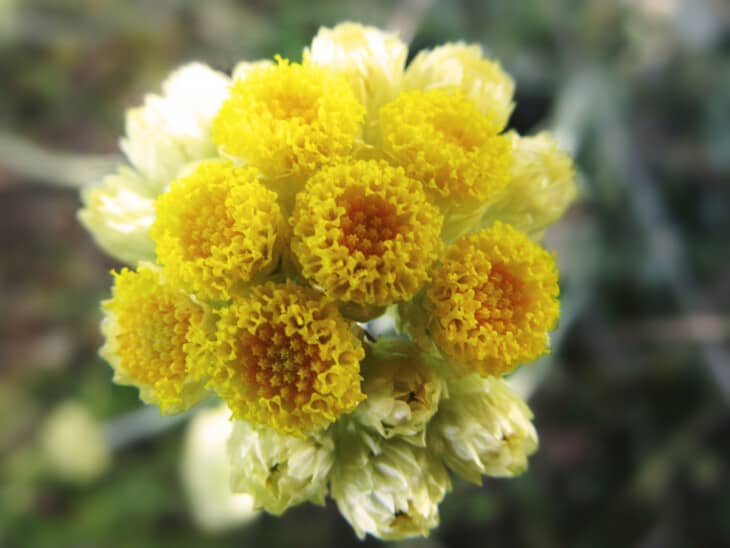
The Mediterranean strawflower has a bulb structure with many small flowers, and the flower buds and shape make it resemble a brain. This annual or perennial plant is native to the Mediterranean and is one of several species in the daisy family.
The Mediterranean strawflower is also known as the curry plant or eternal flower. This aromatic plant is not limited to being used in flower beds but has other uses, too, including as an essential oil, ointment, and treatment for allergies, inflammation, and cramps.
This flowering plant is brightly colored with blue, pink, and yellow, and due to the beautiful scent of its leaves and flowers, it is widely used to make perfume. When inspecting the flowering buds of the Mediterranean strawflower, you’ll notice the bumps and ridges look a lot like the human brain.
6. Brassica Oleracea (Cauliflower)
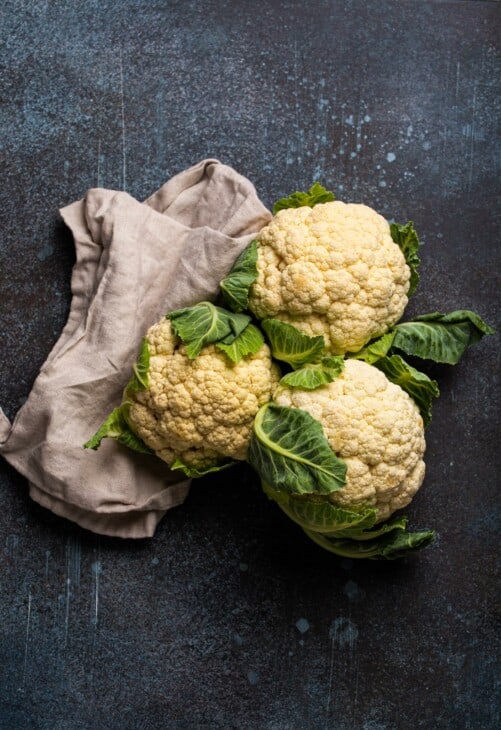
Brassica Oleracea is typically called cauliflower and is not only a widely consumed vegetable plant but has individual fleshly stalks that make up a round mass that resemble the cortex part of the brain. The sections of a cauliflower, along with its bumps, ridges, and shape, are similar to the different hemispheres of the brain.
White cauliflower is the most commonly found color of cauliflower, but this plant also comes in orange, brown, green, and purple varieties. Cauliflower is filled with many nutrients, vitamins, and fatty acids and is an excellent addition to your vegetable patch.
7. Maclura Pomifera (Osage Orange)
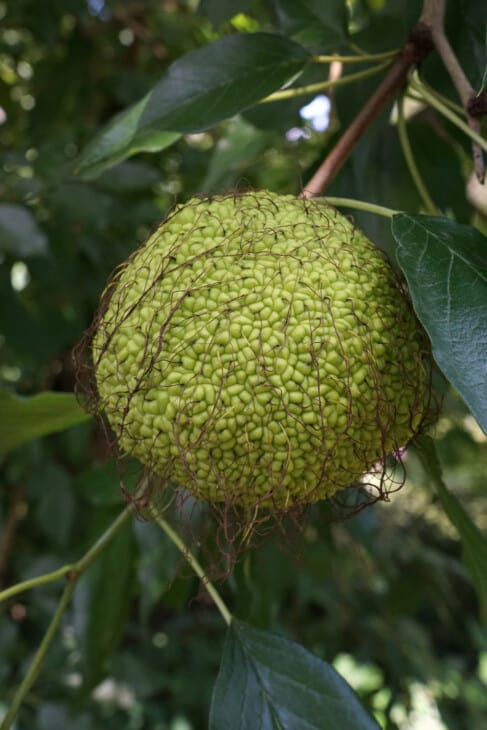
The Maclura pomifera or osage orange is called monkey brains or brain fruit. Although this fruit is technically edible, it’s hard and challenging to eat. In addition, this fruit is quite large, yellow in color, and has separate pocket structures, which gives it a brain-like appearance.
The Osage fruit is the size of an orange but can big as big or even bigger than a grapefruit. The osage orange is also the largest fruit tree native to North America and is closely related to the mulberry family.
These trees are fast growing, wind and heat-resistant, and can adapt to different soil conditions. Interestingly, the chemical compound inside the orsage fruit repels spiders, ants, fleas, and other pests.
8. Tanacetum Bipinnatum (Dune Tansy)
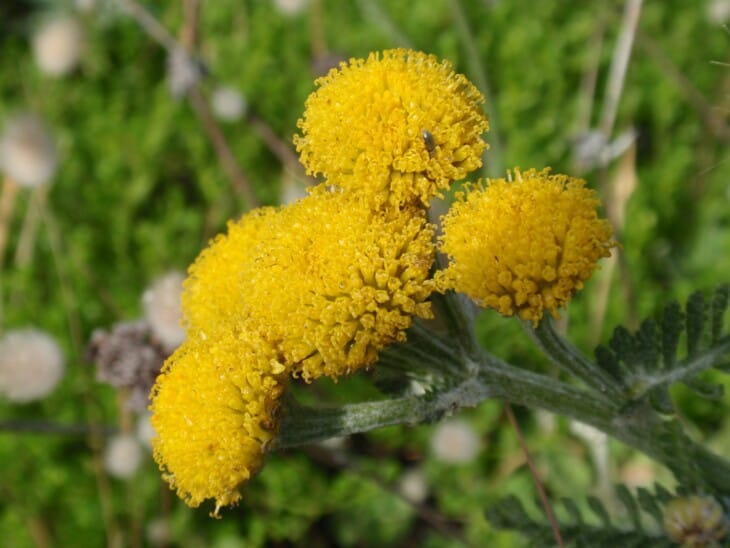
The dune tansy is a flowering plant found in North America and California. This plant is also commonly known as camphor tansy due to its camphor scent. The dune tansy has roughly 15 flower heads with many tiny yellow disk-like florets, making it look a lot like a brain.
The dune tansy is found in sand dunes and harvested for medicinal purposes. The flowers on dune tansy are yellow and bloom in the summer months, and the flowers are commonly used to make tea for colds and respiratory infections.
9. Rhodiola Rosea Flower (Artic Root)
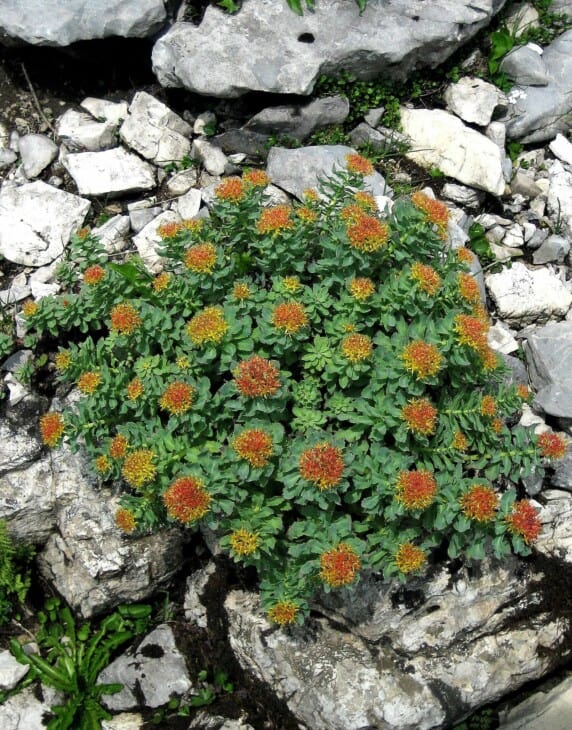
The Rhodiola Rosea flower is found throughout Europe and Asia and consists of a thin stem with many flowers that resemble a brain. This flower species is native to the Mediterranean region and used for ornamental and herbal purposes.
Besides resembling a brain, the artic root plant is also known to improve cognitive function and has adaptogenic effects. There are 73 species of Rhodiola, and this plant has been used extensively in Chinese medicine.
10. Nelumbo Nucifera (Lotus)
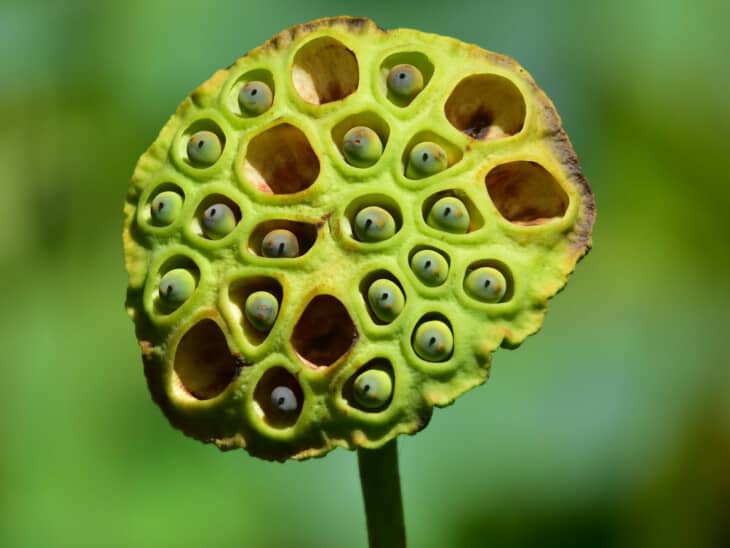
The last plant on the list of plants that look like brains is the Nelumbo Nucifera or sacred lotus. The outer portion of the lotus doesn’t appear to be brain shaped, but when you take a closer look at the cup-like structure in the middle of the lotus called the carpellary receptacle, and all the many bumps called stigmas attached to it, it looks similar to a brain.
The lotus flower symbolizes creation and rebirth, and this popular flower is often mistaken for a waterlily. The lotus is an aquatic perennial plant only found in pink and white, and one of its most remarkable qualities is the lotus seed’s ability to survive droughts for more than 200 years.

